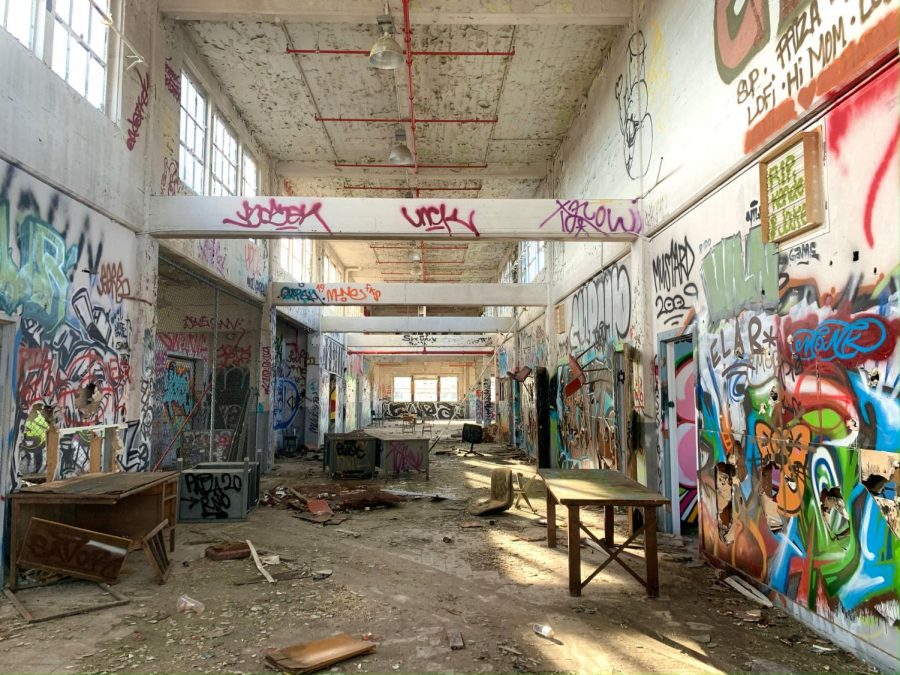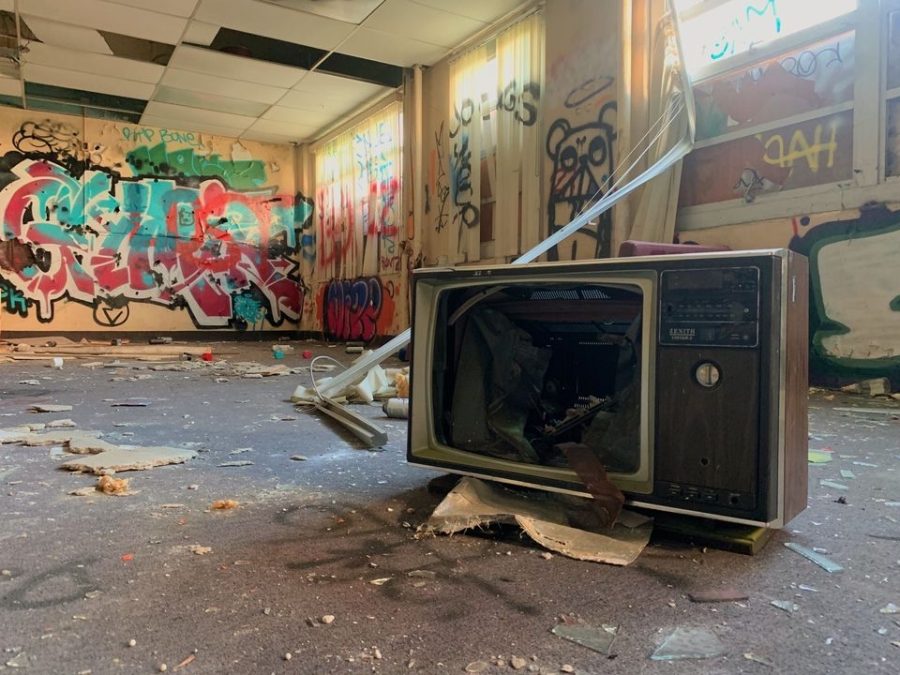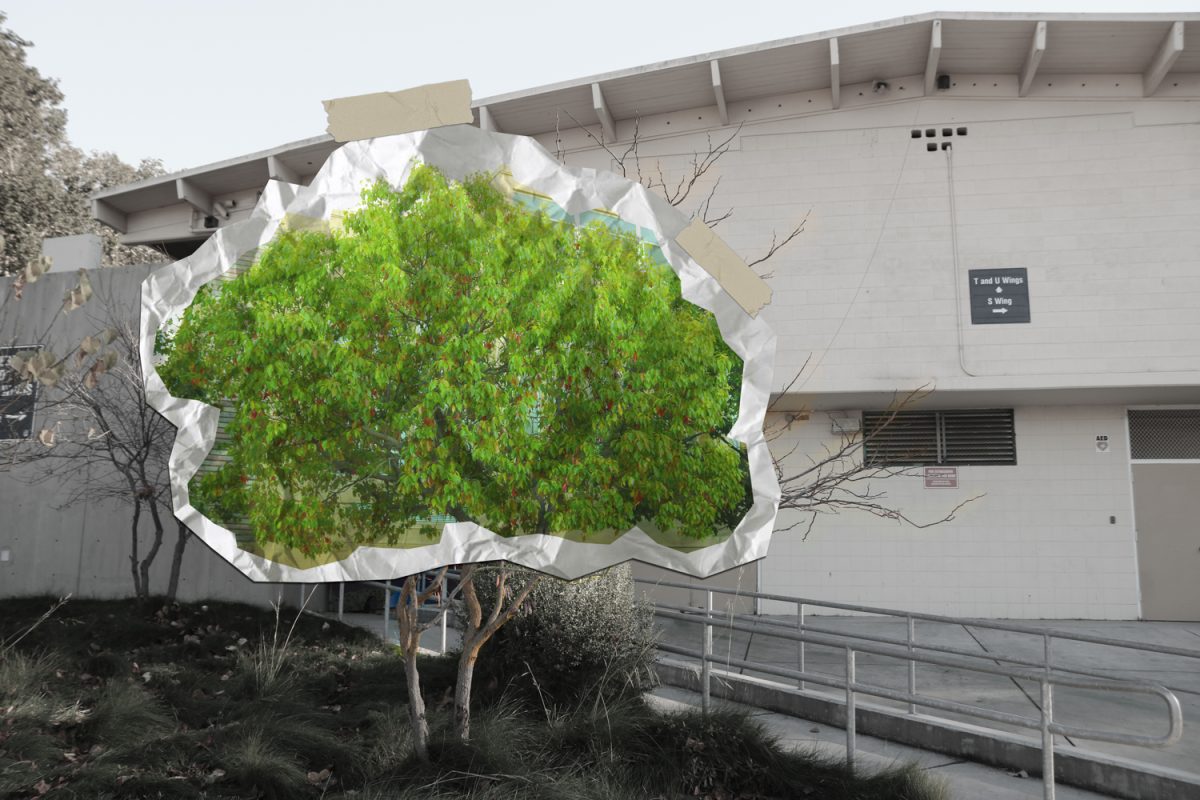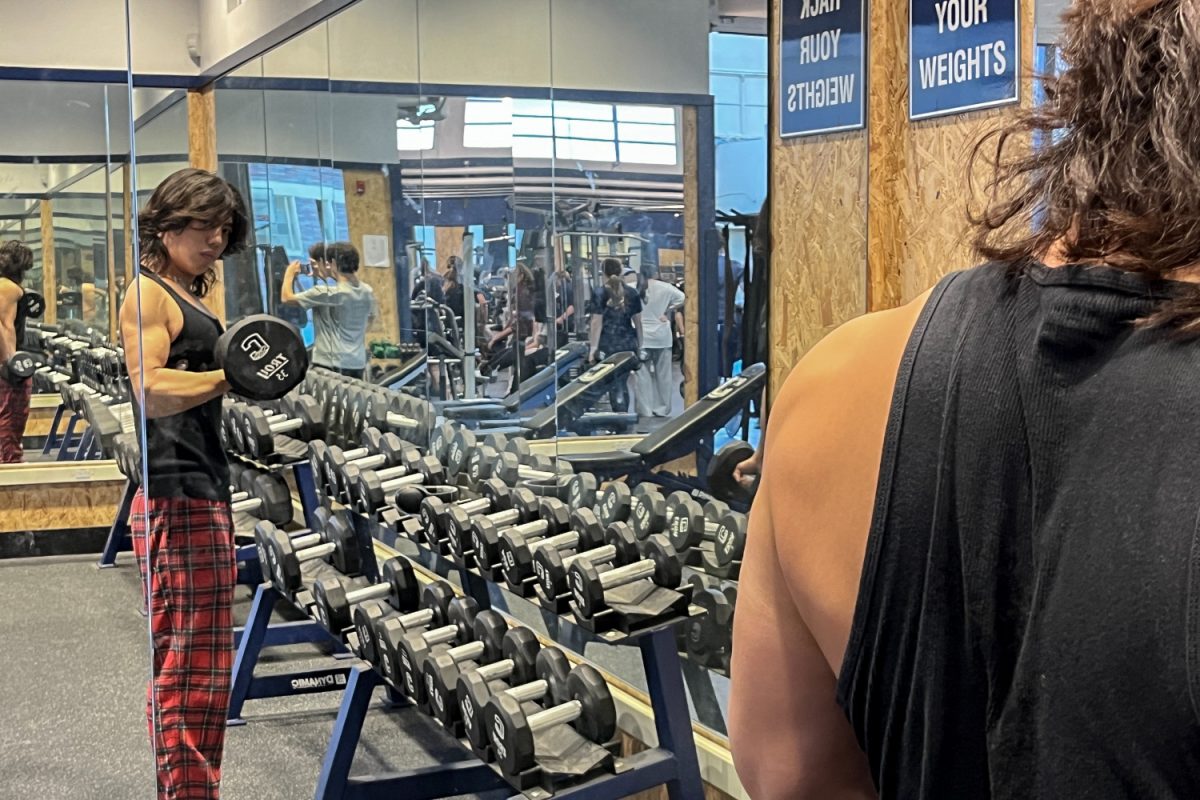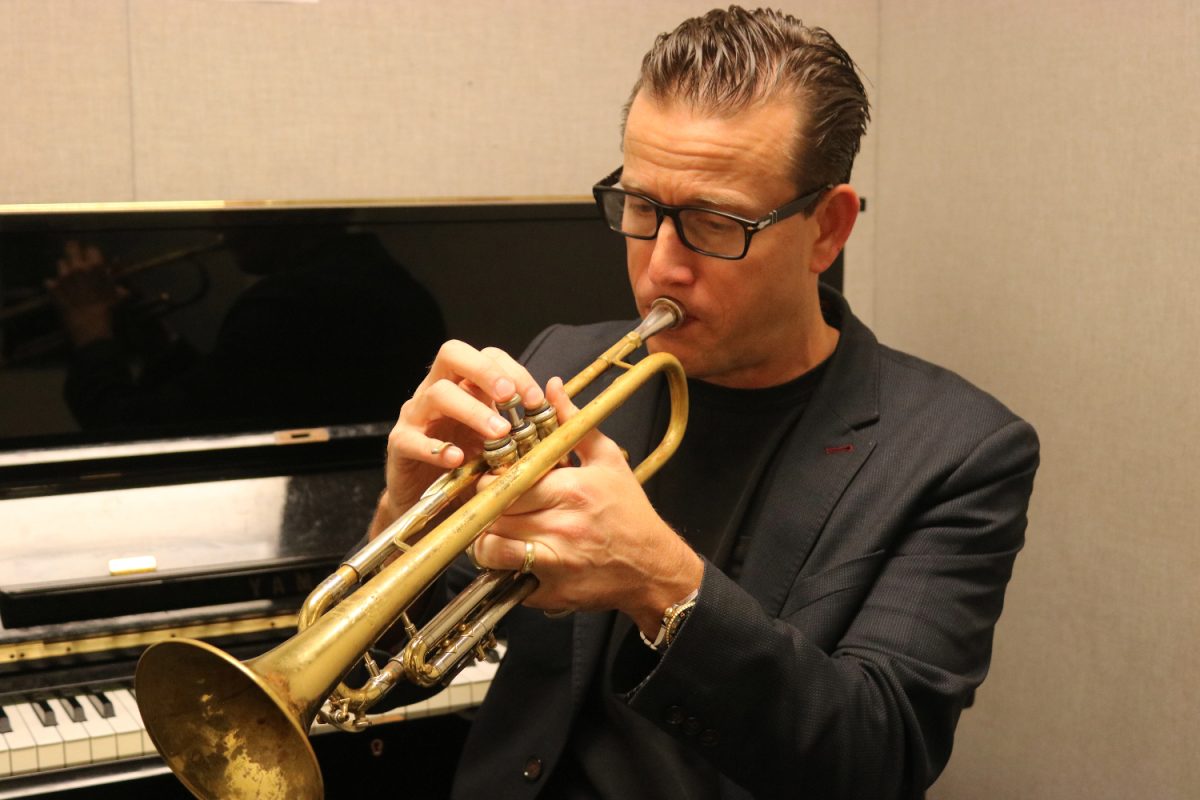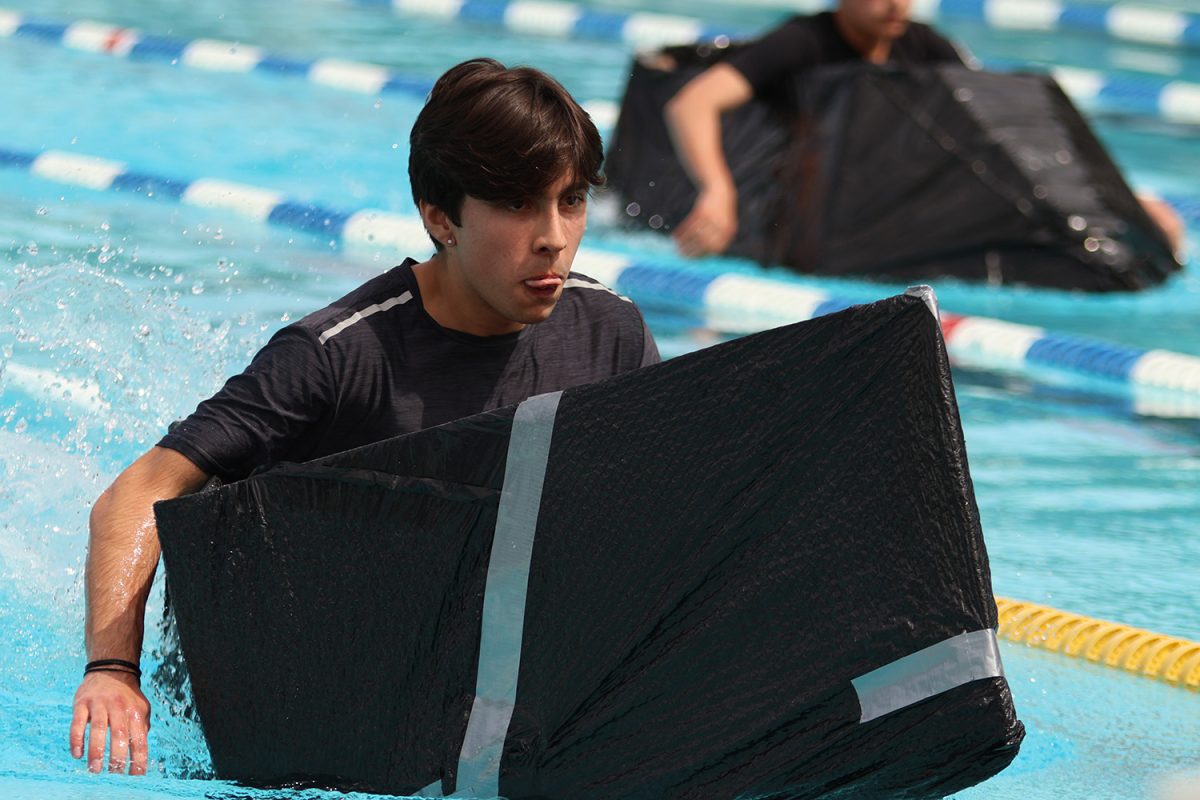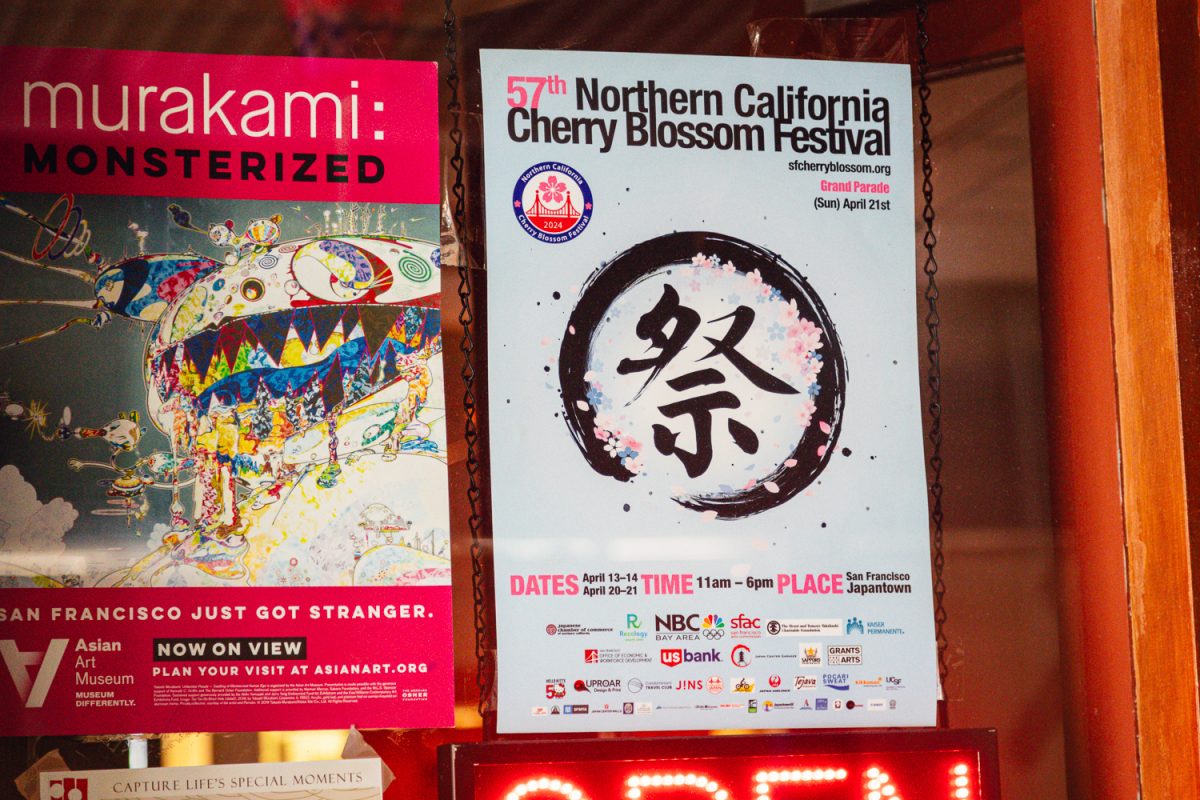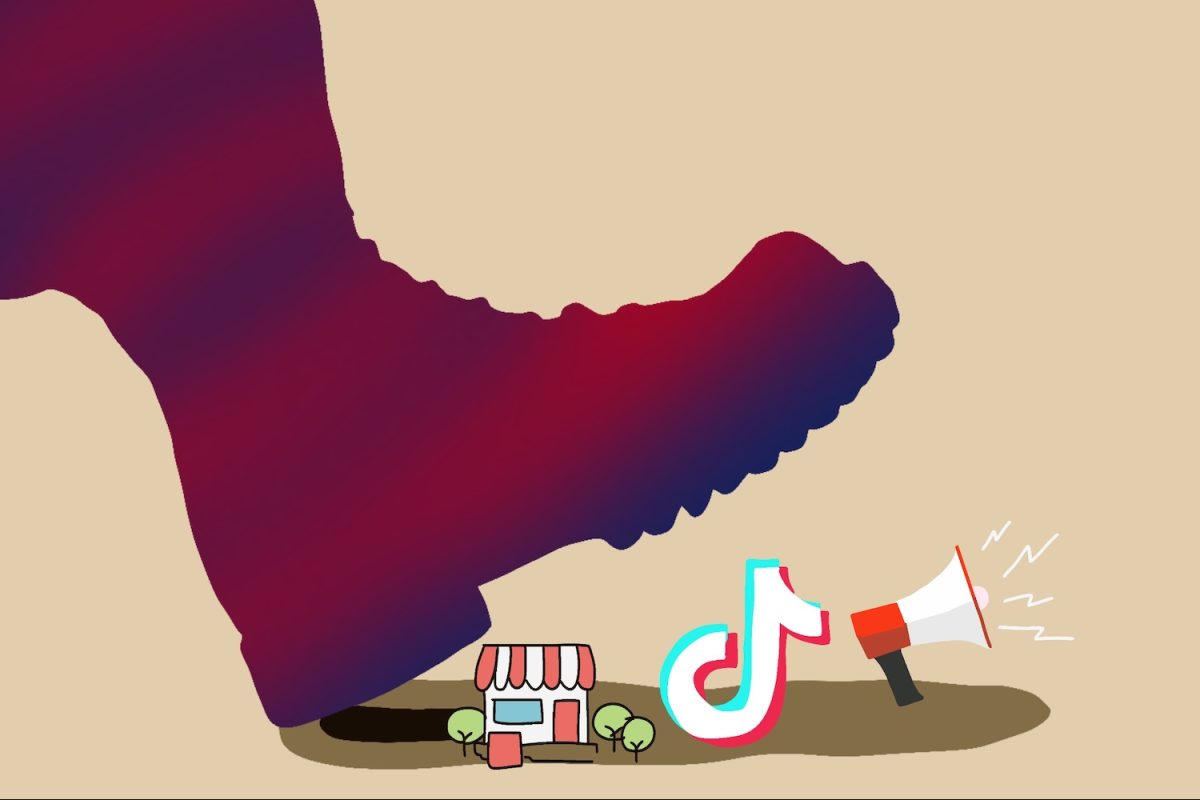A “no trespassing” sign will stop most people in their tracks. For others, a sign telling them to keep out has the opposite effect. The thrill of being where they are not supposed to be is drawing teens and adults around the world to urban exploring, or ‘urbex,’ an activity that has been growing in popularity due, in part, to social media.
Urban Exploration can be defined as the activity of exploring man-made structures, especially abandoned buildings and areas not generally open to the public. Some variations of urbex include roofing, (going on roofs of skyscrapers), digging (underground exploration), stalking (visits to abandoned places), and infiltration (visits to heavily guarded places). This might seem like an activity for adrenaline-seeking junkies with no regard for the law; but to others, it is about documenting the beauty in the decay of what otherwise would be forgotten.
Mercy High School student Gina Canepa has explored multiple off-limits areas around the Bay Area, including an abandoned grain silo in San Francisco, an old biotechnology laboratory in Richmond, and vacant mansions in Woodside.
“I think urban exploring is a hobby that not everyone understands,” Canepa said. “Personally, I like finding out about the history of the places I go to, but it’s also just a cool activity my friends and I like to do. I get people all the time asking questions and wanting to know where I go.”
Despite popular opinion, risk-taking teens are not the only ones engaging in urbex.
“The age range is the widest I’ve ever seen out of any hobby. I’ve explored with teens as well as 70-year-olds, who often get along very well,” said R.F. Paulus, an urban explorer since 2014.
R.F. Paulus* is the author of “Exploring the Hidden San Francisco Bay Area,” a book about urban exploration sites in the Bay Area. Paulus began to explore San Francisco after moving from France, where he had explored the famous Paris Catacombs.
“The feedback on the book has been very positive,” Paulus said. “I had to be very careful to respect the culture and ethos of urban exploration while making this book, which is why all the locations and details about places are intentionally vague.”
Similarly, Greg Miller, a 36-year-old software engineer, turned his hobby of urbex in the Bay Area into a way to make a little extra side money.
“My best friend and I got reached out to by a publisher to make a book. It didn’t sell that much, but we didn’t really do it for the money anyways,” Miller said.
To Miller, exploring is a lot about finding art in hidden spots.
“I’ve always been a fan of graffiti. A lot of urban explorers either love it or hate it. I fell in love with it and tried to find as much of it as I could. Graffiti artists usually paint in abandoned places. So those two interests can intersect and overlap a lot,” Miller said.
Miller appreciates the discussion surrounding the morality of breaking and entering into abandoned or closed-off areas, but throughout his travels he has stayed true to the “leave no trace,” motto, helping to justify his hobby.
“I think the main thing is that it comes down to is the word of the law versus the spirit of the law. It’s technically illegal, but we aren’t there to steal or destroy anything. We don’t want to make a bad name for urban explorers,” Miller said.
Max*, is a 28-year-old full-time urban explorer in Ukraine who has garnered a large Instagram following under the handle @urbexstorm.
Max spent his childhood in a small western Ukrainian town hit by economic depression after the fall of the Soviet Union. He and his friends spent their free time exploring the neighborhood, especially as the depression caused many shops and factories to become abandoned.
“I can say I have been an urban explorer in some way long before an actual definition appeared,” Max said.
Max uses a professional camera in hopes to document the atmosphere of his adventures.
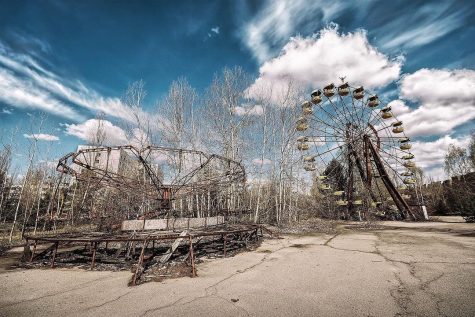
“Overall, urbex is a mix of a little bit of everything. It’s a history, it’s an art, a workout, an adventure. The main allure for me is the visual aesthetic of visiting such places,” Max said.
Max has explored countless places ranging from secret Soviet labs to abandoned military bunkers and abandoned spaceships in Kazakhstan. He was able to make his passion into a career, offering private urbex tours in Kyiv.
“I was actually making a living from my urbex tours, there was a big interest in them,” Max said. “In Ukraine, I could find easily accessible and interesting places and offer successful tours with up to 30 people in a group.” However, with the onset of the Russian-Ukrainian war, Max had to stop his tours.
Halfway across the globe, 41-year-old Jonathan Haeber resides in San Francisco. Haeber has dedicated much of his life to historic places, beginning in high school, when he interned for the Bureau of Land Management. When Haeber was 23, he began exploring actively. A book called “Access All Areas” became a sort of urbex Bible to Haeber and other explorers.
“Sort of the reason we called it the Bible is it gave you the rules of the game. Take nothing but photographs, leave nothing but footprints,” Haeber said.
While it is true that abandoned sites are likely to become littered with trash, broken glass, and graffiti, Haeber hopes that people can learn to explore and share places with others, but not destroy them.
“There’s this unwritten rule. Although not everyone follows it, it’s a rule about respecting a place, not trashing it, and just appreciating the environment,” Haeber said.
How did this hobby originate? While the activity has garnered broad attention in recent years through social media, it is not a new phenomenon. The development of large industrial cities is one factor to consider in the growth of urban exploration.
“If you look at San Francisco in 1960 versus today, the building activity just blew up,” Haeber said. So now, you had an urban environment that had never to this extent had so much infrastructure, interesting corners, tunnels, and subways. So what’s sort of allowed this interest to really blossom, I think, is the rapid development of cities in the 20th century.” This illuminates why San Francisco is a prime spot for urban explorers in California.
According to Miller, with the advent of social media, urbex has taken on a new meaning.
“A lot of these places you wouldn’t even know exist because a lot of times they’re so far out of the public eye. So social media, especially Instagram, gives a lot of hype to these places and the hobby in general,” Miller said.
Exploration YouTube channels have popped up, with some amassing over 8 million subscribers, like the account Sam and Colby. The TikTok hashtag “#urbanexploring” has over 870 million views. Most explorers recognize that technology has made it easier to publicize this hobby, but also the idea that urban explorers have been around for a while.
“Social media has definitely made it more visible and has inspired a new generation of explorers, myself included. But this has always been done in one way or another, with less publicity, for as long as there have been curious people and off-limits places anywhere in the world,” Paulus said.
However, the popularization of the activity has led to some problems in the urbex world. Along with just the sheer destruction of an abandoned site, some people will look to steal copper, wire, or other expensive relics that can then be sold.
“If something becomes well known and it becomes something that people love doing, you inevitably have a few bad apples. All it takes is one or two people out of 100 to ruin a place. It’s just the way society works,” Haeber said.
Haeber elaborates on how social media has changed the urbex experience.
“I think social media has caused people to not look at these spaces as reverently as they would if it wasn’t there. When you’re looking at something on a phone, it kind of dilutes the value of the place,” Haeber said.
Haeber sees exploring alone as a type of spiritual and learning experience. He believes that if people were able to do that, they would in turn respect the places more.
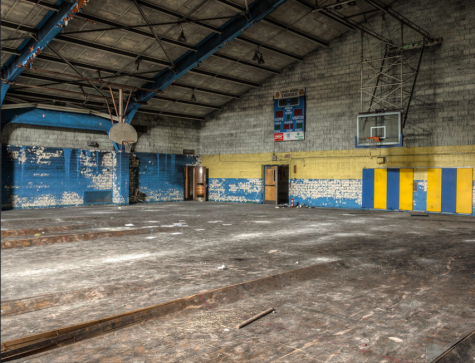
To city police, however, looking at pictures online instead of venturing into restricted areas may be the best option for those interested.
“When you illegally go into someone else’s property or a building, there’s always the potential for someone wanting to prosecute for trespassing,” said Kathryn Winters, a San Francisco Police Department public information officer. “The other thing I think urban explorers need to be aware of is that there’s a risk of physical danger. The properties may not be well maintained, be unstable, or contain hazardous materials.”
She offers some advice to those who are hoping to explore.
“If you’re able to find out who owns the property, ask permission to be able to come onto the property and look at it or photograph it,” Winters said.
In San Francisco, minors who are caught trespassing will have to notify their parents and the situation may have to be detailed in a police report. An adult defendant caught trespassing in San Francisco can face up to six months in jail and a fine of $1,000.
“There were things I did when I was younger that I wouldn’t do now for various reasons,” Haeber said. “I used to go to military bases on federal property, and if caught, it can end up on your record permanently. So gradually, over time, I became a little more risk conscious.”
Haeber continues to explore, but is quieter about it. Despite the risks, however, even if urban explorers are caught, they are often let off without any real consequence.
“At least in my experience, a lot of times folks will be let off with just a warning,” Winters said.
Differing laws in different areas can also be an incentive to explorers. For example, in Ukraine, there are practically no laws preventing trespassing. In addition, many urban explorers are usually able to talk their way out of a fine or arrest, especially if they are able to convince police they are naive, curious people and not a threat.
Despite the fact that many explorers like to adventure alone, there’s a worldwide community involved with urbex. The Chernobyl zone in Ukraine and the Fukushima zone in Japan are popular places to urban explore. One can travel to France to explore the Paris Catacombs and abandoned metro stations. The Italian towns of Sorrento and Sammezamo hold overgrown, ruined old buildings that attract many.
“There’s urbex groups in all sorts of different countries. Even though we may not know each other, everyone is very welcoming. If you are traveling, you can see whatever the local forums say or find people in the area known for urbex, and reach out to them. They’re going to open their arms to you and say, ‘Oh, yeah, let’s do something together,’” Haeber said.
Much of this community tries to be secretive, for the self-explanatory reason that much of what they do is illegal. In addition, they hope to protect untouched places from people who may disrespect them. Many explorers gain access to new spots through online forums. To become a full member, someone has to vouch for an individual and ensure that they aren’t dangerous, or someone hoping to do drugs and throw parties in the locations.
“The more I explored, the more I found out about a very vibrant and wide community of explorers in many U.S. cities and abroad. Some urbex communities are more protective than others about who they let in their favorite locations, how they view social media usage, and how they feel about the hobby in general, which makes for a very fluid, decentralized, and sometimes conflicting urbex culture,” Paulus said.
By using tools like drones, Google Maps, Google Earth, or lockpicking, explorers are able to scout and successfully plan their expeditions. However, sometimes high-profile zones require a large amount of planning and exchanging tips with other explorers.
“This is also why having a community is helpful and can help get into more unique places while minimizing the risk,” Paulus said.
Although many of these urbex sites do involve illegal aspects, this does not have to be the case. There are ways to get private guided tours of unique, less public locations, which can be found by a simple Google search.
“You don’t need to climb a fence to urban explore if you can’t or don’t want to. There are options for everyone. The one thing a man needs in this is a burning curiosity and an interest in discovering new things,” Max said.
For these explorers, urban exploration is not just a silly hobby, it’s a lifestyle. Over time, economic and population shifts mean new abandoned landscapes will appear, and urbex will forever be changing.
“The thrill of being where you are not supposed to brings everything to a new level,” Max said. “Just by taking a deeper look into your surroundings, you become different than the average person. You become a part of the hidden world, a viewer of secrets and things people don’t even expect to exist.”
*Max and R.F. Paulus declined to give their full names because of the legal risks associated with urban exploring.
Carlmont Media’s anonymous sourcing policy


